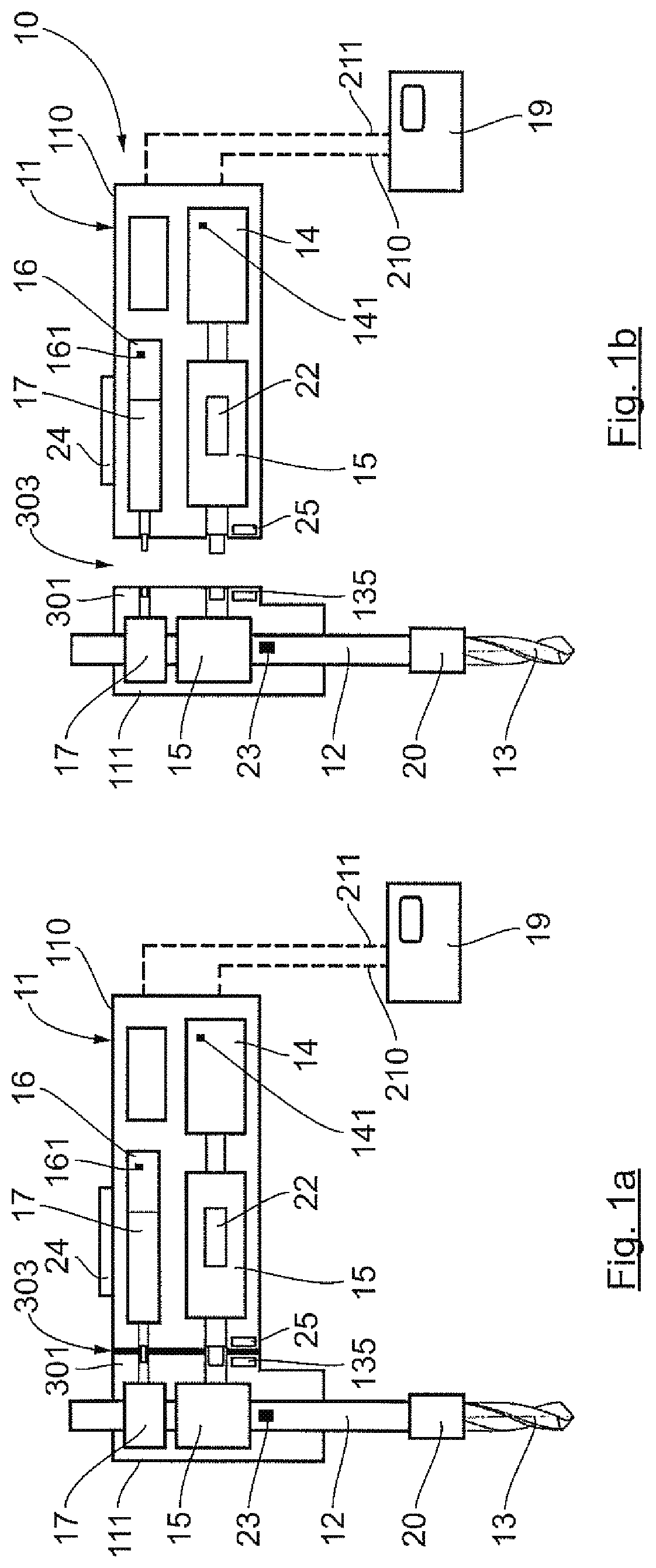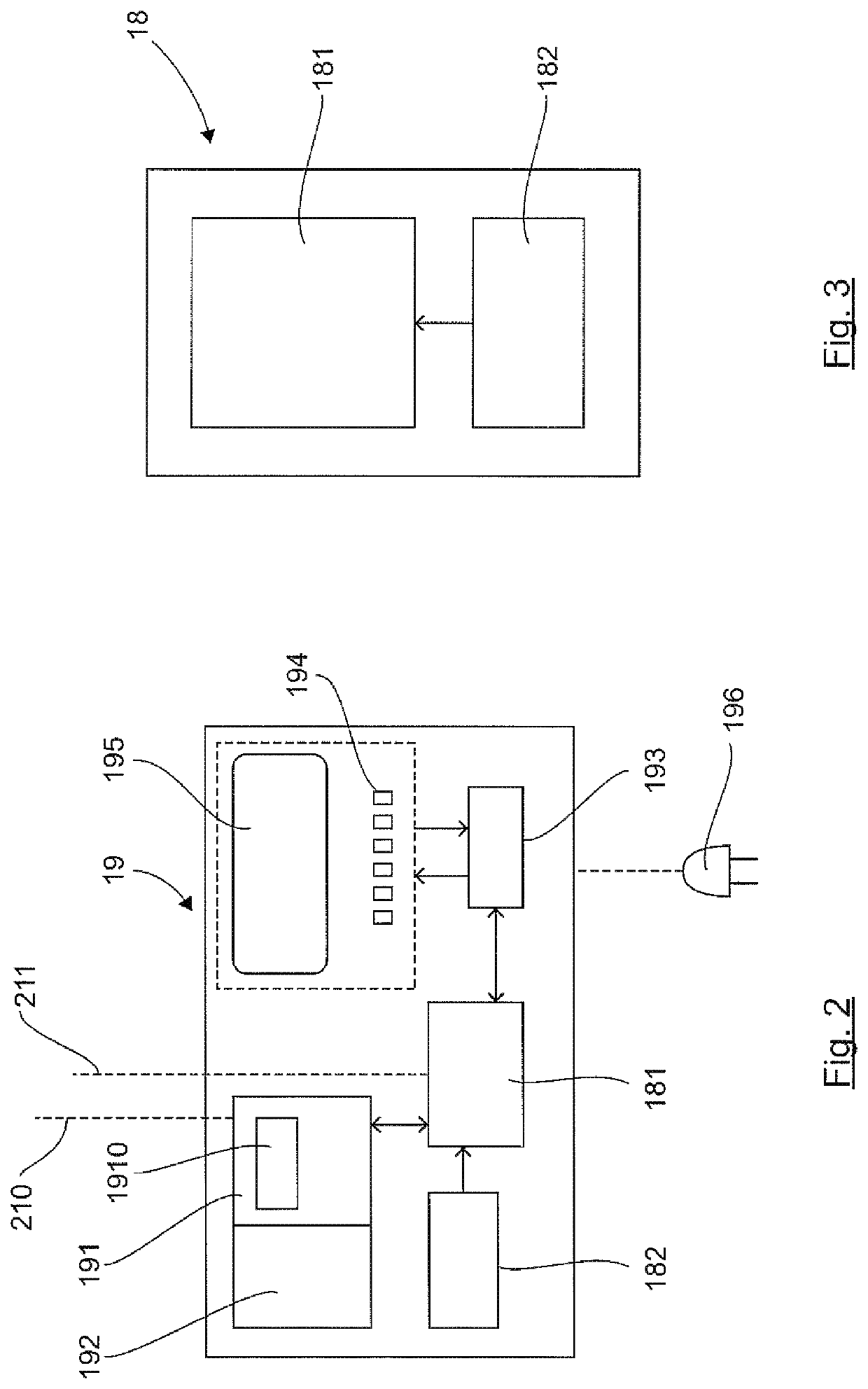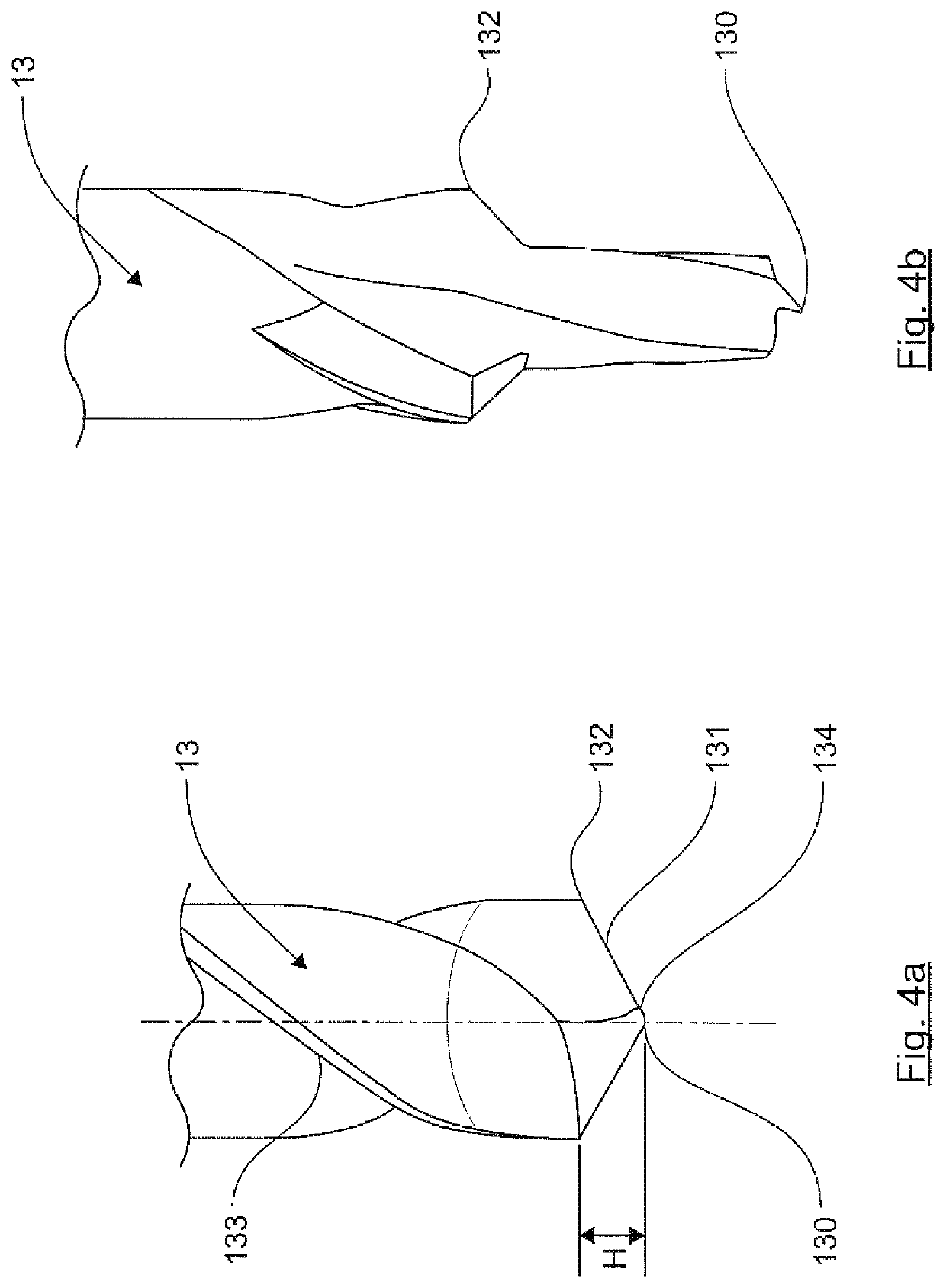Method for determining the state of wear of a drill, and corresponding device
a drill and wear state technology, applied in the direction of instrumentation, programme control, measurement/indication equipment, etc., can solve the problems of drill bit wear, drill bit performance impact, drilling operation that does not comply,
- Summary
- Abstract
- Description
- Claims
- Application Information
AI Technical Summary
Benefits of technology
Problems solved by technology
Method used
Image
Examples
Embodiment Construction
[0214]6.1. Device
[0215]A drilling device or drill to implement a method according to the invention comprises a drill or a drilling robot with controlled cutting parameters. Such a drilling device is known per se to those skilled in the art and is not described in detail herein apart from the elements more specific to the invention.
[0216]As can be seen in FIGS. 1a and 1b, such a drilling device 10 comprises a casing 11.
[0217]The casing 11 comprises a first casing portion 110 and a second casing portion 111 that extend appreciably perpendicularly to one another. In one variant, the casing could extend along a single axis and thus not have an essentially T shape.
[0218]The drill comprises an output shaft 12 that is mobile in rotation and in translation along a same axis. This output shaft 12 is connected by means of one or more transmission chains to driving means.
[0219]In this embodiment, the driving means comprises:[0220]An electric rotational drive means 14 linked to the output shaft...
PUM
 Login to View More
Login to View More Abstract
Description
Claims
Application Information
 Login to View More
Login to View More - R&D
- Intellectual Property
- Life Sciences
- Materials
- Tech Scout
- Unparalleled Data Quality
- Higher Quality Content
- 60% Fewer Hallucinations
Browse by: Latest US Patents, China's latest patents, Technical Efficacy Thesaurus, Application Domain, Technology Topic, Popular Technical Reports.
© 2025 PatSnap. All rights reserved.Legal|Privacy policy|Modern Slavery Act Transparency Statement|Sitemap|About US| Contact US: help@patsnap.com



